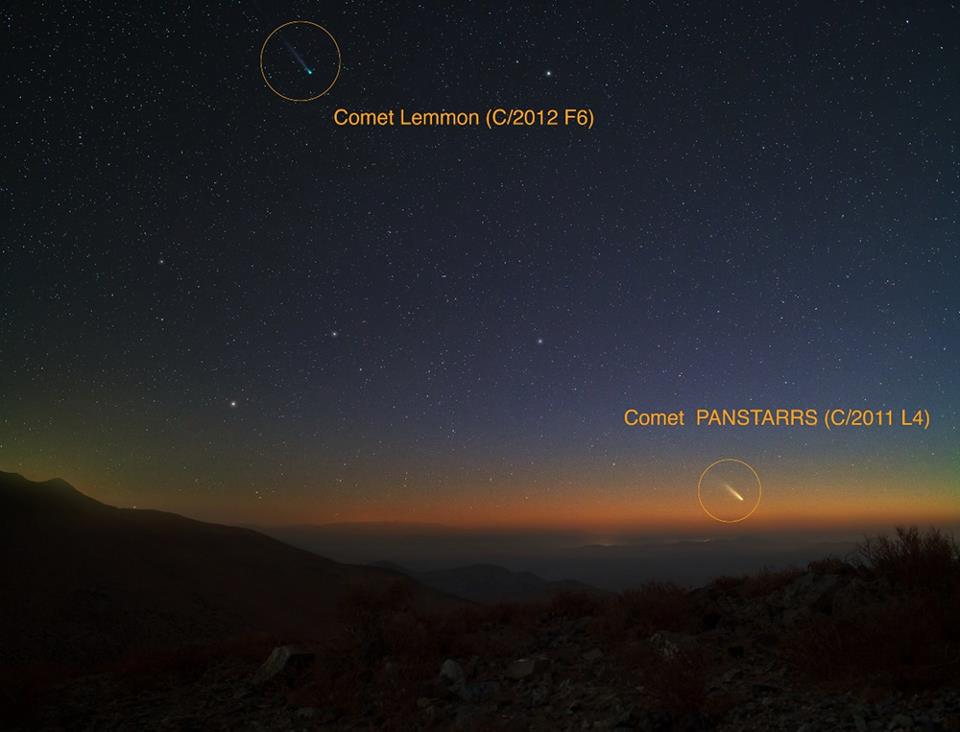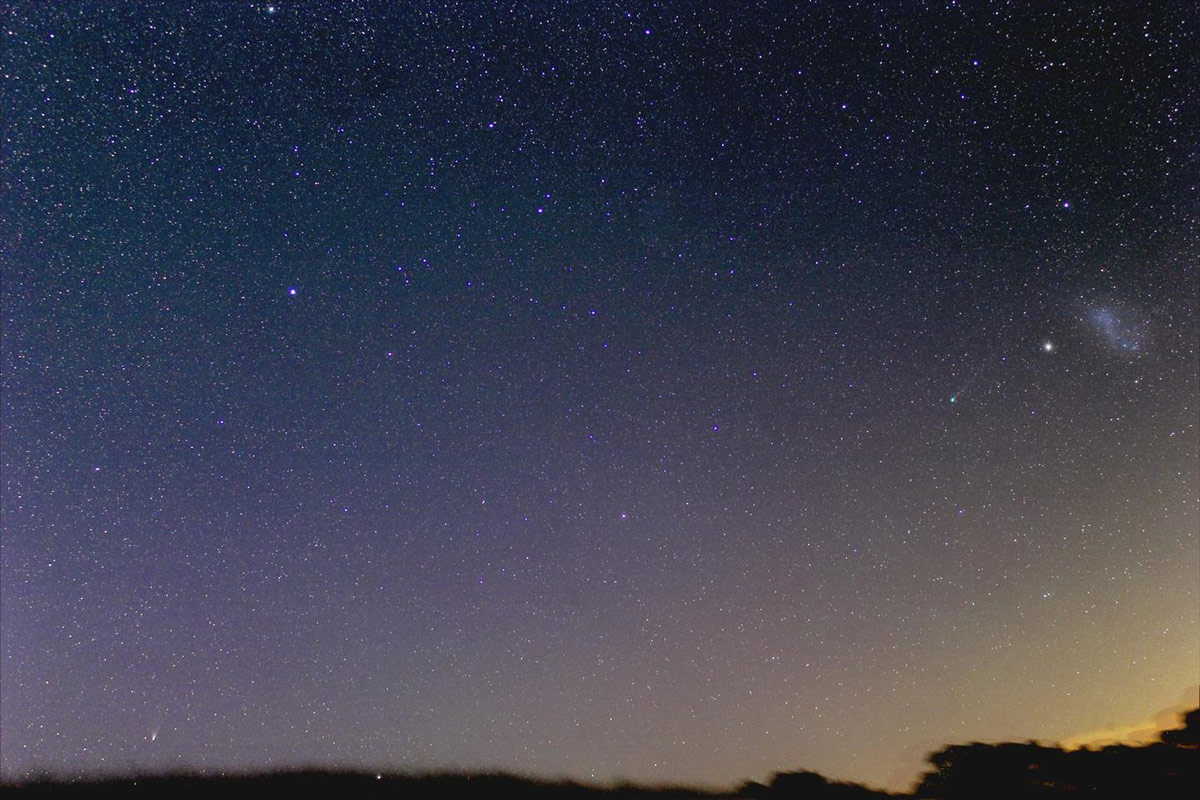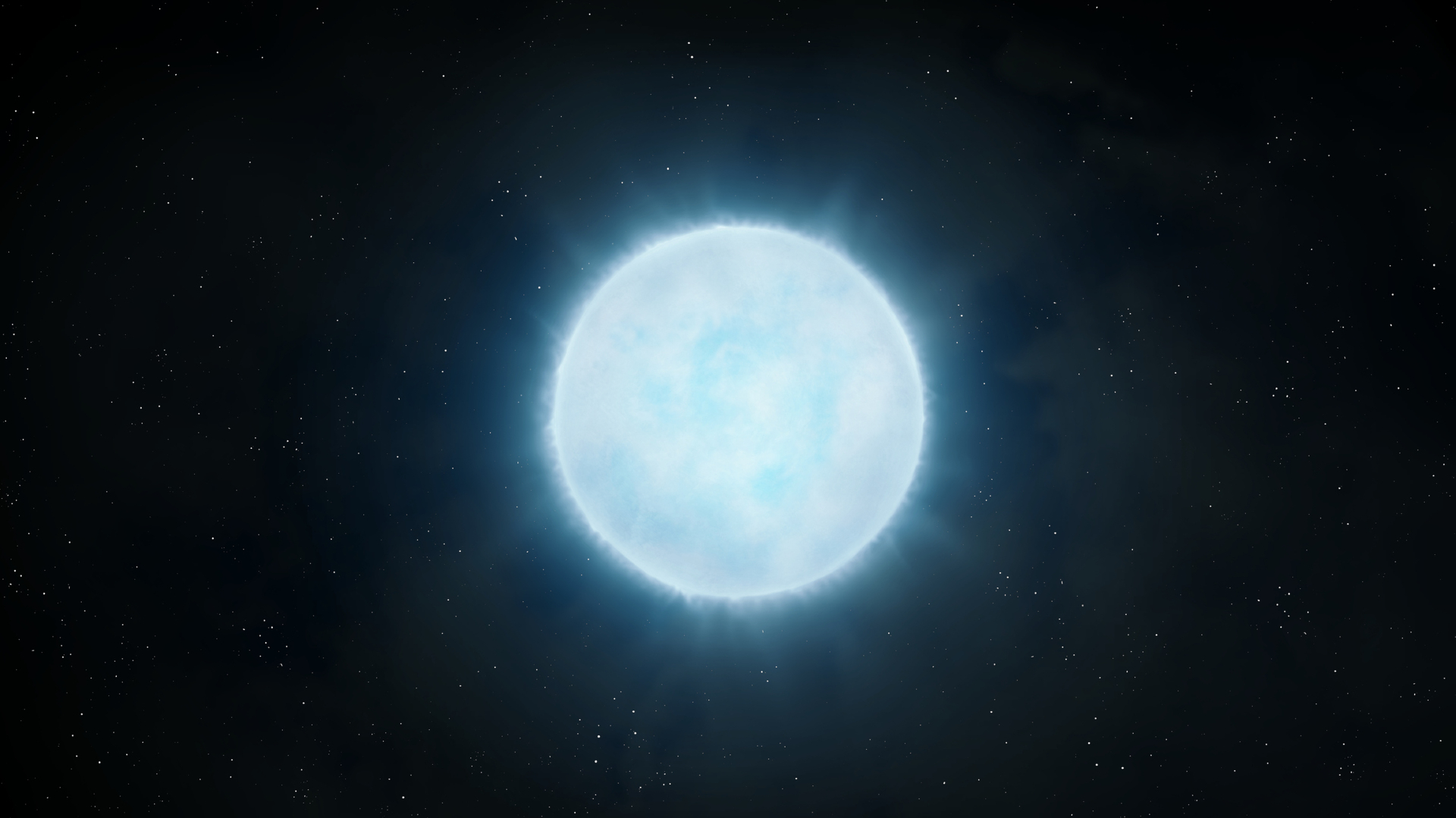Wow! Rare Photos Capture 2 Comets Together in Night Sky

Two comets are putting on an amazing night sky show this month and some intrepid photographers have captured rare views of both celestial objects at the same time.
The photos of Comet Pan-STARRS - which made its closest pass by Earth today (March 5) - and Comet Lemmon were taken by veteran space photographers in Chile and Australia in late February. At the time, both comets were visible from the Southern Hemisphere, though Comet Pan-STARRS is set to become visible from the Northern Hemisphere later this week.
One of the double-comet photos was taken by Yuri Beletsky, a Magellan Instrument Support Scientist at Las Campanas Observatory located in the Atacama Desert of Chile. Beletsky is an accomplished space photographer and used a Canon 5D Mark II camera with an exposure time of about 30 seconds on Feb. 28 to capture the rare sight of the two comets together.
"Both comets fit perfectly in the field of view of the camera, although only the Pan-STARRS comet was clearly visible by unaided eye," Beletsky told SPACE.com in an email. "The image turned out to be quite deep (you can see many stars across the field) due to excellent atmospheric transparency and darkness of Chilean night sky, and also due to absence of light pollution."
Comet Pan-STARRS was discovered in June 2011 by astronomers using the Panoramic Survey Telescope & Rapid Response System, or Pan-STARRS telescope, in Hawaii. The comet's official designation is C/2011 L4 (PANSTARRS) and it is making its closest approach to Earth today, coming within 100 million miles (160 million kilometers) to the planet. The comet has brightened considerably in recent days, and could be a dazzling naked-eye sight in the March night sky. [Photos of Comet Pan-STARRS by Stargazers]
Comet Lemmon, or C/2012 F6, was discovered by Alex Gibbs of the Mount Lemmon survey in Arizona in March 2012. It has been gradually getting brighter as it entered the inner solar system and will make its closest approach to the sun on March 24.
Beletsky is not the only stargazer to snap a photo of comets Pan-STARRs and Lemmon together. Patience and some skillful camera positioning also paid off for astrophotographer Justin Tilbrook of Penwortham, South Australia, who captured a remarkable photo of the two comets on Feb. 17.
Breaking space news, the latest updates on rocket launches, skywatching events and more!
In Tilbrook's image, Comet Lemmon appears low above the horizon at the bottom left of the frame, while Comet Pan-STARRS is clearly visible as a bright object with a wispy tail on the right side of the image, near a smudge of light that is the Small Magellanic Cloud (a satellite galaxy of the Milky Way).
"This is the one I've been waiting for," Tilbrook told SPACE.com in an email. "Don't mind saying it was difficult to set this up, a narrow window before sunrise, 4 degrees of hill in the way, limitations with the dome slit and having to mount the camera at the front of the scope at a very odd angle. Took about an hour." He used a Canon 1100D with 18 to 55 zoom lens at 28mm f/4, mounted on a HEQ Pro 5.
So far, Comet Pan-STARRS has been visible from the Southern Hemisphere, but that will change on Thursday (March 7), when the comet enters the Northern Hemisphere night sky.
Editor's note: If you have an amazing skywatching photo of Comet Pan-STARRS, Comet Lemmon or any other night sky object, and you'd like to share it for a possible story or image gallery, please contact managing editor Tariq Malik at spacephotos@space.com.
Follow us @Spacedotcom, Facebook or Google+. This article was first published on SPACE.com.
Nina Sen is a freelance writer and producer who covered night sky photography and astronomy for Space.com. She began writing and producing content for Space.com in 2011 with a focus on story and image production, as well as amazing space photos captured by NASA telescopes and other missions. Her work also includes coverage of amazing images by astrophotographers that showcase the night sky's beauty.

